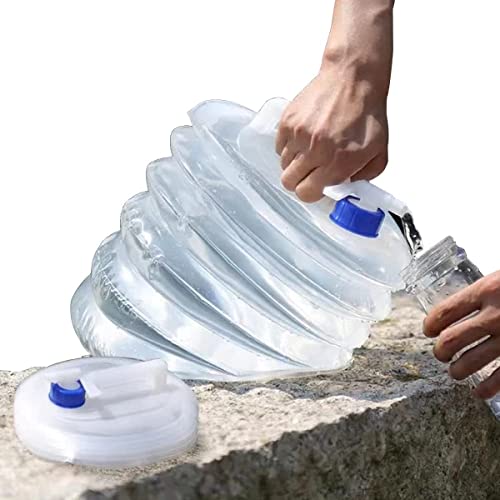One challenge with cross-country and adventure-seeking tours is the inaccessibility of clean, drinkable water tanks.
Many water sources in small towns and caravan stations are unsafe for drinking. Furthermore, such cities and towns lack clean water due to the high global droughts.
Remember, as you travel through remote areas, you need water to stay hydrated.
So, why not pack enough if you cannot get it from your destination? Portable water tanks come in various sizes to match every traveler’s hydration needs.
This article provides insights into mobile water tank usage and handling when traveling.
1. Choose the Correct Size Water Tank
A healthy person should consume at least eight water glasses a day. But the volume increases depending on the outdoor temperature and your health levels.
In some cities, temperatures exceed 35 degrees Celsius during the day, requiring you to consume more water. In addition, when you are physically active, especially during kayaking, biking, or mountain climbing, you sweat a lot, losing more water. In such situations, you need more water to replace the lost amounts and stay hydrated.
A traveler’s most intimidating experience is wandering through unfamiliar towns, forests, or cities to look for clean water. You can avoid such embarrassment and trouble by getting the correct size of portable water tanks.
Get the most considerable portable water tank available, and ensure it has a built-in handle to ease transportation. Do your calculations to know how much water your team will need during the tour. That will help you size your perfect portable water tank.
2. Filter Clean the Water
One mistake by travelers is assuming the cleanliness of water based on source. Whether water comes from a borehole, municipal tap, or water station, it will contain a percentage of dirty particles and organic compounds. You do not want to suffer water-borne diseases on your journey. Consider filtering and purifying your water before storing it in a portable tank.
Look for water filtration systems designed for use with RV and portable tanks. You can choose a large twin RV filter with a sediment filter for removing dirt particles. An activated carbon filter removes chlorine and organic compounds from your water. Do a thorough market research to find the ideal filtration system for your needs.
3. Clean the Tank Regularly
Refilling your portable water tank with clean water is inadequate. Regularly wash the water tank to keep it clean and safe.
Keeping the water unused for extended periods allows algae and bacteria to form and foul the water. You must use the water in the tanks to keep it fresh and clean. Run all the taps regularly to remove water sitting in the pipes. You do not want to drink water with an unpleasant taste or smell.
Use the best water tank cleaning products to clean the tank regularly. One such product is cordial, which helps remove all the dirt and organic compounds inside the tank. Fill the tank with water and drain it several times to remove traces of cordial lime.
You can also use other products popularly recommended for cleaning water tanks.
4. Use a Food-Grade Hose to Fill the Tank
Many travelers assume every hose is perfect as long it can fill their portable water tanks. They do not know that the plastic material in these pipes can leave your water with a sour taste and odor. As the water passes through the hose at high pressure, some plastic particles might get trapped in the water. That can have a significant effect on the water quality and taste. Some materials may cause health issues.
Select a food-grade hose to use for refilling your portable water tank. You can find these hoses in many sizes and types, suitable for use on the go. Evaluate the hose packaging to know if it is perfect for drinking water.
5. Know the Water Refilling Rules and Stick to Them
The worst thing that can happen to a traveler is finding themselves on the wrong side of the law. A legal tussle on top of many miles of journey untraveled could add to your monetary and legal baggage. You can stay legally clean by observing all water refill laws in the city or town you tour. Avoid refilling your portable water tank in every spot you notice running water.
Water is not unrestrained in many places, even the tap, borehole, and river water you get for free. Always ask about the water refill rules in every city and town and stick to them to the latter. The best way to avoid trouble is to refill in water and caravan stations that charge per refill.
Wrapping Up
One of the things to add to your tour resources is a water tank. You need a large enough water tank to stay hydrated throughout the journey.
Water can get foul smells and tastes when stored for extended periods. Therefore, clean your tank regularly and use the water before fetching. You want to carry a food-grade hose for refilling the tank wherever you are.
Watch over the rules regarding refilling water tanks and stick to them. These steps provide safe water and keep you from breaking the law.

